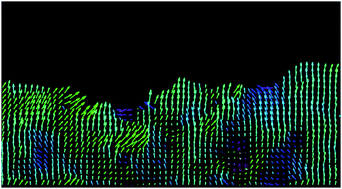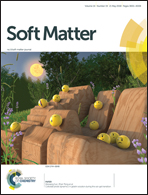From jamming to collective cell migration through a boundary induced transition†
Abstract
Cell monolayers provide an interesting example of active matter, exhibiting a phase transition from flowing to jammed states as they age. Here we report experiments and numerical simulations illustrating how a jammed cellular layer rapidly reverts to a flowing state after a wound. Quantitative comparison between experiments and simulations shows that cells change their self-propulsion and alignment strength so that the system crosses a phase transition line, which we characterize by finite-size scaling in an active particle model. This wound-induced unjamming transition is found to occur generically in epithelial, endothelial and cancer cells.



 Please wait while we load your content...
Please wait while we load your content...